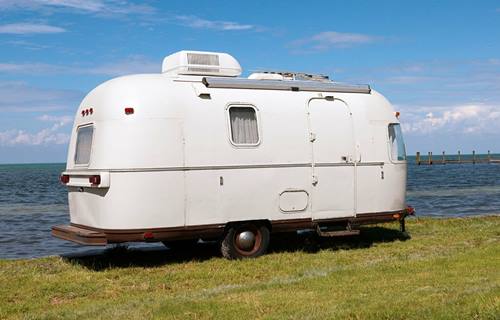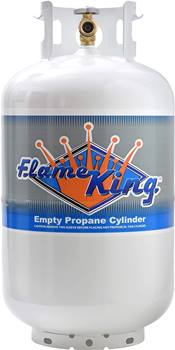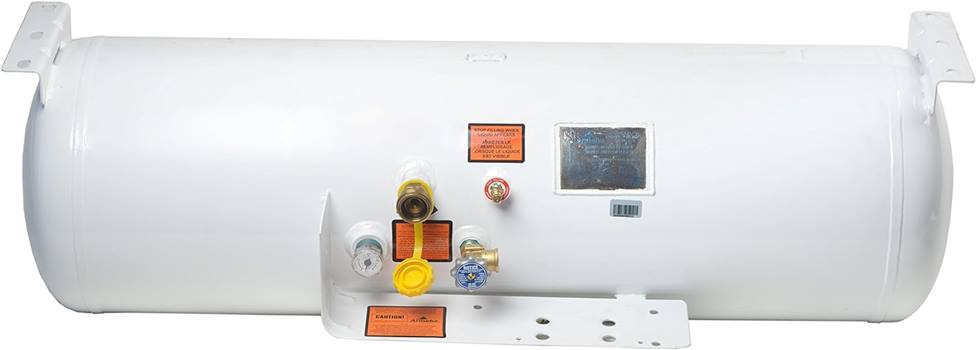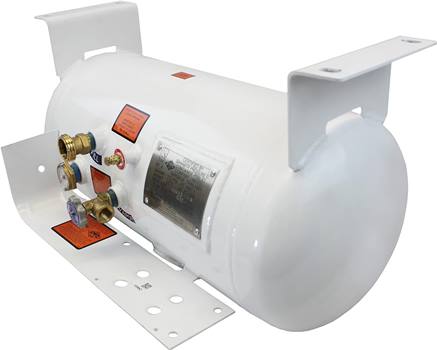The Ultimate Guide to RV Horizontal Propane Tanks


A couple of weeks ago, I invested in the Flame King 120-gallon RV Horizontal Propane Tank, a purchase with which I couldn’t be happier. Incredibly well-constructed and sturdy, with the perfect size to fit into my RV.
Additionally, one of the things I like best about this specific tank is that it is horizontal. It is therefore easier to install and takes up less space within the RV. Placing the tank is also made easier by the inclusion of a mounting bracket.
I’d unquestionably advise this to potential RV drivers!
This can be quite useful, particularly because I’ve been traveling in distant locations without access to propane gasoline pumps. It is a solid, long-lasting tank packed with security measures. The over-pressure regulator on the tank itself is an additional feature I value. Every modern propane tank must have a switch, which is a preventative measure to limit overfilling.
In this blog, you will learn more about the features, types, and variations of propane tanks.
OK, I know what you’re thinking, what aspects should we consider before purchasing a propane tank? Keep reading!!
What to Look For Before Buying the Propane Tank?
The majority of the technology and systems inside an RV, including food preparation and heating devices as well as refrigerators and electrical systems, are dependent upon propane tanks. It is very important to take your unique needs, financial constraints, and the tank’s security attributes into account before selecting a propane tank that fits your RV.
There are several crucial aspects to take into account while selecting a propane tank, and the most important is the size. There are many distinct types of propane tanks, including compact disposable tanks and huge fixed tanks. Another important factor is the type, although installing subterranean tanks is more expensive, they last longer and require fewer services.
We are not thorough yet!
Even though metal tanks are heavier and more costly, they provide greater robustness. Although lightweight and more affordable than steel tanks, metal tanks fail to be as robust. Several safety elements, such as an overfill prevention system with a pressure release switch, must be fitted to propane tanks. All of these components aid in preventing accidents.
Buying a propane tank that includes an extended warranty seems like an advantageous option. It’ll safeguard you in the event that the tank develops a problem.
Let me take a wild guess, you might be wondering whether these propane tanks are carbon fiber-based or not. Find out now:
Is it Carbon Fibre Based?
The carbon fiber tanks allow consumers to examine the propane amount as opposed to depending on an indicator or making a judgment based on volume. Due to the fact that it doesn’t release shrapnel during accidental bursts, it is additionally better in comparison to steel tanks. Furthermore, the unit is modular for easy organization and includes an integrated grip to safeguard the opening valve.
Astonishing, isn’t it?
By now, you’ll be wondering, what is the correct way to fill a propane tank? Let’s find this out!
RV Propane Tank Filling: What You Need to Know?
It is challenging to precisely determine horizontal propane tanks. The reading on the gauge becomes reliable whenever the tank seems full, thereby requiring the tank to be filled while positioned up straight.
Each gallon of propane weighs 4.24 pounds. 4.75 gallons and 20.14 lbs, plus the tare weight stamped on the tank, make up a full tank. This provides space for the thermal expansion of the vapor above the liquid. The best way to determine how much propane is still in the tank is to carefully weigh it and subtract the tare weight to get the propane content.
For instance, assuming the disparity is 3.5 pounds, the remaining propane in the tank equals 0.825 gallons. Due to their per-gallon pricing, the propane connector will only have the capacity to fill the tank with 3.93 gallons.
In more basic words:
The readings of the gauges on horizontal propane tanks are deceiving. Fill the tank completely to have liquid begin to emerge from the venting valve.
Safety Precaution!
Whenever you are around propane tanks, it is essential to take every safety measure required because propane is a combustible gas. Carefully study the company’s directions as well as abide by them.
Do you see where we are going with this? Well yes, now we are going to see the top five RV Horizontal Propane Tanks and their features!!
Top Five RV Horizontal Propane Tanks
It’s crucial to take the tank’s shape, construction, and preventive aspects into account when selecting a horizontal propane tank to use on your RV. In light of these criteria, we will examine the top five flat propane tanks for RVs in this blog.
1. Flame King 30-pound Steel Propane Tank

This steel propane cylinder has an OPD control along with an integrated indicator. The design acts as a low-profile, tough tank featuring a lot of protective features. Additionally, it has DOT approval and is pre-purged, enabling instant refills. See the price here.
Pros:
- Looks good
- Perfect condition
- Fits well
- Cheaper on Amazon
Cons:
- Heavy
- Poor communication
2. Flame King 20-LB Steel Horizontal Propane Tank

The Flame King 20-pound Horizontal Steel Propane Cylinder has several security precautions, has a low-profile design, and is simple to work with. This has been DOT-approved, so it is prepared for filling right away. See the price here.
Pros:
- Portable
- Affordable
- Quick delivery
Cons:
- Damaged
- Empty
- Leaking
3. Flame King 29.3 Gallon RV, Van or Trailer Propane Tank

The ASME-accredited Flame King 29.3-gallon propane cylinder is made of premium steel and features a filling regulator relaxation valve, pressure gauge, and enamel coating surface for security and strength. Additionally, its dependability is checked using hydrostatic and x-ray methods. See the price here.
Pros:
- Perfect condition
- Fit under bus
- On-time delivery
- No damage
Cons:
- Bent welds
- Damaged shipments
4. Flame King 12.2 Gallon RV, Van Or Trailer Tank

The Flame King 12.2 Gallon Propane Cylinder has an ASME-accredited, premium-grade steel tank featuring a filling switch, release valve, flow gauge, and powdered finished surface for reliability and sturdiness. Additionally, its dependability is checked using hydrostatic and x-ray methods. See the price here.
Pros:
- Good quality
- Well-made
- Best price
Cons:
- Partially filled
- Expensive install
You start to worry that, in between the horizontal and vertical, which propane tank is best and most reliable to use for longer periods of time? Let’s find this out through a thorough comparison between the two.
Horizontal vs. Vertical Propane Tanks: Which is Right for You?
I went to a nearby business to purchase a propane tank when I got into a discussion with a worker regarding the need for renewal. After doing a little digging, I discovered that horizontal propane tanks, which are frequently found inside RVs, don’t need to be recertified. There is a 12-year recertification period for vertical propane tanks that are frequently utilized in homes as well as businesses.
How can you beat that?
Well, you must bring a vertical propane tank to a licensed propane tank recertification center to get it recertified. The tanks will have to be checked by the company for wear and tear. The tank will receive a fresh certification and a deadline for expiration, assuming the assessment is successful.
Yes, you read that right!
Compared to air, propane is an entirely distinct type of gas. The propane tank is unrelated to a propane valve. The kind of propane tank someone utilizes along with the equipment that it is going to be connected to should both be functional, regardless of what propane controller you choose.
Below are the main features of horizontal and vertical propane tanks that you need to know:
Horizontal Tanks
- Used in motor homes, RVs, and commercial applications
- ASME tanks
- Do not require recertification
Vertical Tanks
- Used in residential and commercial applications, and portable propane grills
- DOT cylinders
- Require recertification every 12 years
Final Thoughts:
People commonly choose horizontal propane tanks for industrial applications and RVs. They need no recertification, yet they are strong and long-lasting. Keep in mind the size, product, and security measures when purchasing a horizontal propane tank. Purchase the tank through a reliable seller while having a licensed propane seller refuel it.
Related Article: How to Keep RV Tanks From Freezing: Expert Advice